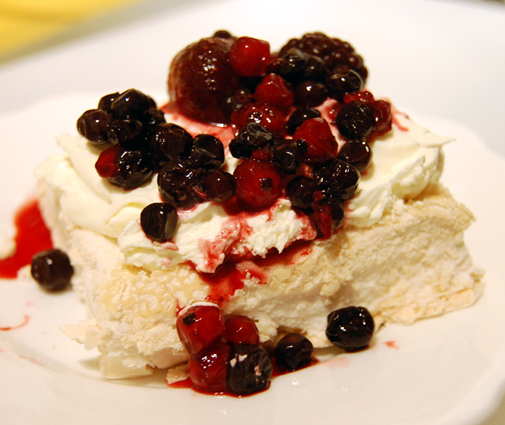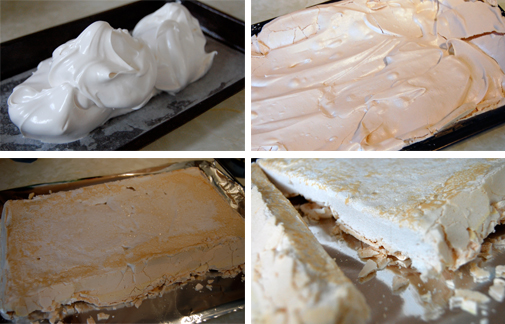
Ahh Sunday. The day of rest. What could be better – or easier – to bake than a pavlova, its marshmallowy centre light and inviting as a cloud? Add some whipped cream and fruit and you have the perfect dessert to round off your Sunday roast.
Pavlova was created in honour of the Russian ballet dancer Anna Pavlova during one of her tours to Australia and New Zealand in the 1920s, although there seems to be some contention over where it actually originated. Competitive antipodean spirit aside, it is immensely popular in both countries, and justifiably so. Egg whites + sugar + air = a magical fairytale of a pudding.
Marshmallow Pavlova
4 egg whites, at room temperature (not straight from the fridge)
1 cup caster sugar
0.5 teaspoon vanilla extract or the seeds of one vanilla bean
1 teaspoon white wine vinegar
whipped cream and fruit, to decorate
Preheat oven to 150ºC and grease and line a 28 x 18 cm (11 x 7 inch) swiss-roll tin with baking paper.
Beat the egg whites in a spotlessly clean bowl until soft peaks form – it’s worth wiping the inside of the bowl with a piece of freshly-cut lemon before you begin to ensure there is no grease in it, as even the slightest speck will hinder your efforts. Gradually add the sugar, beating well after each addition until it has all dissolved (if you rub a little of the mixture between your thumb and fingertip, it should feel smooth not grainy).
Add the vanilla and the vinegar and beat for a further minute. Pour the meringue into the prepared pan, smooth out and bake for 45 minutes until it is crisp on the outside. Turn off the oven and leave the pavlova in there with the door ajar until it has cooled; it may sink a little in the middle.

Turn it upside down onto a board or large flat serving plate – it will crack a bit but that doesn’t matter in the slightest. If you’re going for the neat look, trim the edges with a sharp knife. When you’re ready to serve it, dollop some whipped double cream over the top and garnish with seasonal soft fruits.
I challenge you to resist a second slice.
